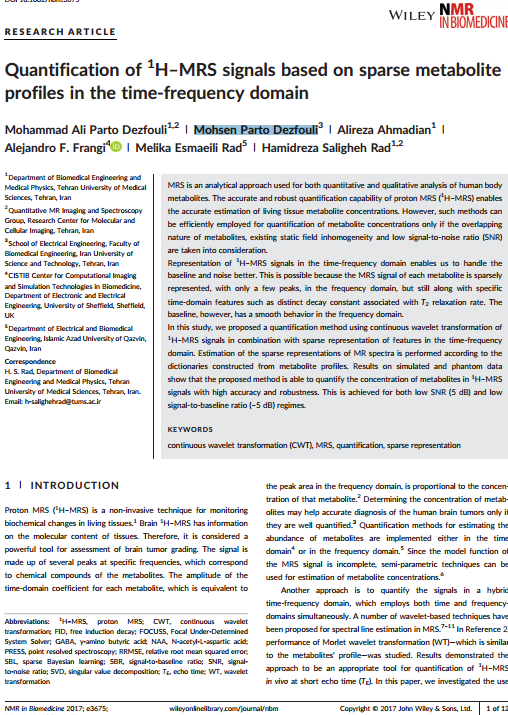Quantification of 1H-MRS Signals Based on Sparse Metabolite Profiles in the Time-Frequency Domain
Abstract
MRS is an analytical approach used for both quantitative and qualitative analysis of human body metabolites. The accurate and robust quantification capability of proton MRS (1H–MRS) enables the accurate estimation of living tissue metabolite concentrations. However, such methods can be efficiently employed for quantification of metabolite concentrations only if the overlapping nature of metabolites, existing static field inhomogeneity and low signal‐to‐noise ratio (SNR) are taken into consideration.
Representation of 1H–MRS signals in the time‐frequency domain enables us to handle the baseline and noise better. This is possible because the MRS signal of each metabolite is sparsely represented, with only a few peaks, in the frequency domain, but still along with specific time‐domain features such as distinct decay constant associated with T2 relaxation rate. The baseline, however, has a smooth behavior in the frequency domain.
In this study, we proposed a quantification method using continuous wavelet transformation of 1H–MRS signals in combination with sparse representation of features in the time‐frequency domain. Estimation of the sparse representations of MR spectra is performed according to the dictionaries constructed from metabolite profiles. Results on simulated and phantom data show that the proposed method is able to quantify the concentration of metabolites in 1 H–MRS signals with high accuracy and robustness. This is achieved for both low SNR (5 dB) and low signal‐to‐baseline ratio (−5 dB) regimes.

